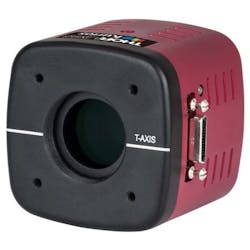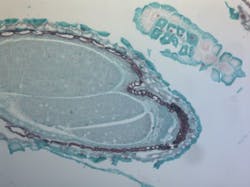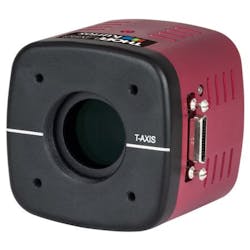Tunable LC bandpass filter enables fast hyperspectral imaging
Thorlabs (Newton, NJ) has unveiled a tunable bandpass filter (KURIOS-WB1) based on liquid-crystal (LC) cells sandwiched between polarizing elements. The filter is tunable between 420 and 730 nm at a switching speed of 5 to 40 ms, depending on the initial and final wavelengths; for wavelength changes of 30 nm or less, the switching time is always less than or equal to 5 ns. The filter tunes anywhere within its wavelength range in minimum increments of 1 nm. The spectral bandwidth depends on the wavelength (narrower in the blue, wider in the red); at 550 nm the full-width half-maximum (FWHM) bandwidth is 35 nm. The filter works equally well from either direction; for maximum throughput, linearly polarized light must be used.
The LC filter can be coupled via hardware and/or software to external devices. In some coupling schemes, trigger options allow the filter to either drive an external device such as a camera, or be driven by an external device such as a stage. For example, the filter can be coupled with a scientific camera to provide a high-spectral-resolution hyperspectral imager suitable for biomedical applications and chemical research, where quick material identification and 2D spectroscopy are required. In combination with a CCD camera, the filter results in images with a higher accuracy for color representation than using a standard CCD camera with a so-called Bayer mosaic (a standard red-green-blue pixel-by-pixel filter grid). The true spectral imaging that results reveals spectral features that are not detectable using coarser techniques. In the example shown, a root cell is hyperspectrally imaged through a microscope by the camera/filter combo. Contact Shanshan Song at[email protected].


